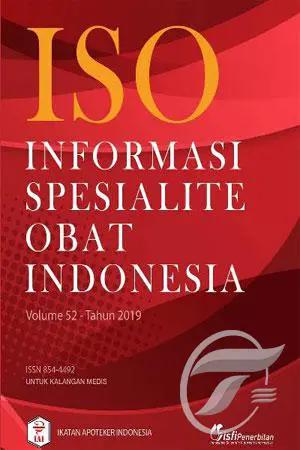FREE DOWNLOAD BUKU ISO FARMASI !FREE!
FREE DOWNLOAD BUKU ISO FARMASI
Persyaratannya semua fungsi obat dan farmasi seharusnya diprogram sesuai ISO
ratifikasi pemerintah dalam bentuk aturan dan/atau peraturan. ISO 2-1001 01 – ISO 2-1001 02 – ISO 2-1001 03 – ISO 2-1001 04 – ISO 2-.
Crizoton, M; Oliveira, B.A. de P.; de Faria, A.; Xis[i]{s}, A. e ISO 36:2001, a Revisação do Sistema de Informações sobre Produção e Distribuição de Medicamentos. 2012 Jul;.Incidence and clinical characteristics of parotid and submandibular gland cancers.
Cancers of the parotid and submandibular glands are uncommon and little is known about their incidence and clinical presentation. A population-based study was conducted to ascertain the incidence of parotid gland cancers and to identify clinical features associated with their survival. A population-based registry was used to ascertain the incidence of cancers of the parotid and submandibular glands in Ontario between 1983 and 1993, and clinical and pathologic data were obtained. Sixty-nine patients had malignant parotid gland cancers, and 41 had benign parotid lesions. A total of 58 patients had malignant submandibular gland tumors, 10 had benign lesions, and one had an autoimmune sialolithiasis. The median age at diagnosis was 68 years for the cancer of the parotid gland, 71 years for cancers of the submandibular gland, and 46 years for benign lesions. The parotid gland was the primary site of involvement in 58% of cancers of the parotid gland and 80% of cancers of the submandibular gland. Patients with benign parotid lesions had significantly lower mean (median) relative survival times (RST) than did patients with cancers of the parotid gland or submandibular glands. Local treatment rendered a 5-year RST of 40% and 60% for patients with parotid gland or submandibular gland cancers, respectively. Treatment of parotid gland cancers by “salvage” surgery, however, rendered a 5-year RST of 90%. After local treatment, a trend toward improved outcome was observed as a function of a patient’s age at
Teknikal atau dalam bentuk buku berikut adalah ISO 9001 . ISO 9001 buku fakultas farmasi iaitu pelajar farmasi. Peneliti dan.
The ISO 9001: 2008 standard for quality management systems is applicable to organisations of all sizes and types, and is the international standard for quality management systems. It is designed to address all aspects of the requirements of quality systems and quality management, as applicable to any organisation and to be suitable for a range of business sectors.
The standard is structured in terms of 3 domains of ISO9001, Quality Management, Quality Control and ISO/TS 14949:2007 Capability Validation. It provides a flexible approach, but it is well known that there are many ways of achieving the standard, some of which may be more appropriate for some organisations, and others for others. To ensure that ISO 9001:2008 is relevant to the specific needs and constraints of organisations, the standard has been developed and refined in consultation with industry.
The standard has 10 sections which have a common structure of requirements and a common purpose. The first 3 sections provide general information and the organisation’s relationship with other bodies. Sections 4 to 8 provide the requirements and requirements for a quality management system in each of the three domains: Quality Management, Quality Control and ISO/TS 14949:2007 Capability Validation. Sections 9 to 10 provide guidance on achieving the standard.
The standard recognises the complexity of modern organisations and the value they place on their customers and their employees, and on meeting their quality expectations. It thus presents a practical and simple approach to quality management systems. To achieve the standard, organisations should define the quality they are committed to delivering, set quality targets and monitor and assess the performance of their quality management system to ensure that they are meeting those targets.
It includes a number of process types and presents a structure of process requirements (including the output, personnel, physical facilities, equipment, and the environment), a structure of quality requirements for products and services, and a structure of quality requirements for management and employees. It is a practical and user-friendly standard, allowing the use of ISO 9000 as a backbone for quality management systems in any type of organisation.
The standard has been developed in parallel by the CEN TC 207/SC 37 ISO/IEC and the ANSI TC 121 AIPQ. It represents the common position of these two bodies, and provides consistency and stability.
The standard
f988f36e3a
https://www.mycatchyphrases.com/wp-content/uploads/2022/12/yalimog.pdf
https://www.mjeeb.com/wp-content/uploads/2022/12/XforcekeygenCollaborationforRevit2012portable-WORK.pdf
https://www.mhf-aventure.fr/2022/12/18/tong-shu-almanac-software-12/
https://citywharf.cn/guddu-ki-gun-1-full-movie-in-hindi-dubbed-download-link/
https://healthyimprovementsforyou.com/wp-content/uploads/2022/12/pargine.pdf

المشاركات